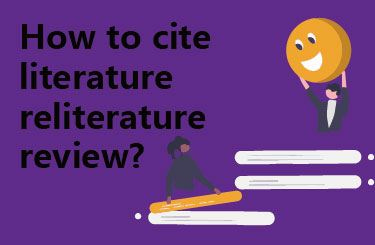Step 1:Introduce the theoretical background(theoreticalramework)
Before reviewing the specific literature, you need to introduce the theoretical background or model under your research topic, because this is the foundation of all literature! It is the most FUNDAMENTAL thing!
Step two. Introduce the existing literature.
There are two things you must do when reviewing.
1. have focus!
Here note, although it is iterature review, but must not be the accumulation of literature, to be selective! Select the most and your research topic related to the focus of 45 articles!
Review, the other can be briefly said.
2. Hierarchical!
Not only is it important to read a single article, but the interrelationships between articles are even more important! So you need to summarise, classify and compare the literatures you read.
For example, you can introduce articles with the same viewpoint (or using the same research method) in one paragraph.
Also highlight the sense of conflict between the literatures! Because there is a sense of conflict in order to make the literature review seem hierarchical, stimulate the reader’s interest in reading down!
Universal Sentence Patterns for [Existing Research
Recent evidence suggests that….
Extensive/Previous/Prior researchhas shownthat…
Previous researchhas established that….
A series of recent studies have indicated that…
Studiesoverthe pasttwo decadeshave providedimportant informationon…
Thereisagrowingbodyofliterature thatinvestigates”.
Ample evidence existstosupport the view/hypothesis tat…
Researchers havebecome neaesigiyinterese……..
isanemerging researcharea intheflof….
[The extent towhich…
The extent towhich… has remained controversial.
Whether and the extent towhich … Whether and the extent towhich … determines the… The extent towhich … determines the… is controversial.
However, the extent towhichthemodelof… infuences…
However, the extent towhichthemodelof… infuences… has been under muchdebateinthe lof-.ome… where as some…
There appear to be discrepandies between someof the reported observations.
The results onthis questionare mixed.
Researchonthis isue presentsconficingfindings.
Researchonthis isue presentsconficingfindings. The iteatureon is less consistent.
Thereis farless consensusas to…
Step Three. Introduce the researchgap
After reviewing the existing research, it is time to present your research. That is, we must answer the question of whyyou are
must answer the question of whyyou are doingwhatyou are doing.
What are the problems with existing research?
What hasn’t been researched?
What articles have you not been convinced by their conclusions?
What do you feel needs to be improved?
This is your critical thinking, your essence!
Universal sentence pattern [research gap] (lack of previous research)
While/Whist/Although some/extensive/a considerable body of research has been carried out on * much less is known abut…
To date, this problem has received ite/scant atention in the research literature.
The role of… The role of… in… The role of… in… isless certain/understudied/poorlunderstood.
So far, however, there has beenvery ittle discussionabout…”,…incontrast to…”.
Incontrast to…”,. thereis much less information about the ffctsof…
[researchgap]Universal Sentence Types (previous research flaws)
This seems to be a common problem in …
The limitations of … The limitations of … are increasingly apparent.
One limitation in… One limitation in… is that…
The existing studies have many problems in ….
The existing accounts fail to rsole/adress …
Half ofthe studies evaluated filed to specify….
sresearch is not without controversy.
Step Four. Introduce the currentstudy.
Finally, it is natural to introduce your study. Here is an overview, as well as the need to clarify your researchaim again, which should be consistent with the research break in step 3 in order to be consistent.
[researchaim]Universal Sentences
This studylperlessay is aimed at… /provides an vierview of … / discusses the role of . . in… / invstiates the factors that detemine…
The aim of this study is twofold. the ftst is to.The second is to…




